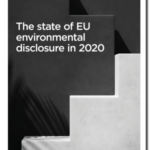A tangled ethical web – The best corporate sites breathe life into the complexities of corporate social …
A tangled ethical web – The best corporate sites breathe life into the complexities of corporate social responsibility DAVID BOWEN.
Corporate social responsibility has become a big issue, and with business ethics remaining at the forefront of managers’ minds it will surely stay big through bad times as well as good. It also has an interesting relationship with the web.
(Published 7 february 2003 in Financial Times)
Websites are good at handling complexity, and CSR is complex (even the question "what is it?" is not as simple as it sounds). Websites can become part of the CSR process themselves – by acting as discussion areas for the grand and fuzzy issues of business’s relationship with the wider world.
Having decided to look at how companies report on CSR, I almost immediately found myself a victim of the "what is it?" question. It is about the environment and community involvement, of course, but as I trawled around I realised it could take in much, much more. To refine my understanding I decided to visit the UK’s Business in the Community, probably the world’s leading organisation for encouraging corporate niceness.
At www.bitc.org.uk/ corporate-impact, BITC is helping companies quantify performance on a range of indicators under the headings of marketplace, community, environment, workplace, community and human rights. It has assembled a scorecard for 17 companies so far. Dropdown boxes led me to discover that 71 per cent of Marks and Spencer’s suppliers are screened for human rights compliance, 48 per cent of BAA’s waste is recycled and Jaguar received nine complaints in one year from locals about its factory.
This emphasis on measurement is having an effect, judging by the higher level of quantitative reporting on UK websites than on those from other countries. That does not mean other companies are necessarily lagging behind in CSR – they are just less attuned to the concept of putting hard numbers to what has always been a soft area.
If you look at the ICI site (www.ici.com), you will find a good-looking report on safety, health and the environment, with charts showing how the group is doing against its targets on indicators such as water use and hazardous emissions. The nitty-gritty figures, aimed at experts rather than the public, are offered as a separate set of data.
The financial services group, Prudential (www.prudential.co.uk), shows this is not an issue only for manufacturers: it provides a well laid-out section where I found out how much waste was recycled at the Cardiff office as well as the proportion of non-Caucasians and women employed around the world.
Tesco (www.tesco.com) also provides plenty of figures within its slick CSR review. A list of key performance indicators is linked to graphs showing actual figures, while a friendly chart uses a shopping trolley to show whether each initiative is under development, on track, has been completed or has exceeded expectations. Strange that there is no column for "lagging behind" – as there is on ICI or indeed Shell (www.shell.com), whose impressive Shell Report is positively self-flagellatory.
This raises the question of whether CSR material is part of the marketing effort rather than a genuine attempt at transparency. Tesco may be unsubtly self-serving – but why does Shell choose to criticise itself if not to win points from the public? It discovered a while ago that it is better to attract fire to its own website than to be assaulted elsewhere.
Take a new posting from the Tell Shell forum: "How can multinationals not have blood money when all they do is bribe the dictators of third world countries for their own greedy, soulless and merciless directors and shareholders?"
At least Shell’s forum has the huge benefit of being engaging. Too often corporates seem to feel that telling us how committed they are to the environment and social responsibility is enough to make us feel friendly towards them.
Tate and Lyle (www.tateandlyle.co.uk) has a well-signposted and clearly laid-out CSR section. There is plenty of text, well written too, but the motherhood and apple-pie quotient is through the roof: "Tate and Lyle strives towards the highest ethical standards in all aspects of its business… it takes environmental issues seriously." I suppose this is no worse than a mission statement – but it is very, very boring.
It need not be. Companies are indeed doing many good things around the world, and where they take the trouble to describe these, the CSR material comes to life. Siemens (www.siemens.com) has no quantitative data, but has an interesting feature on an education project in the Amazon rainforest.
This appears not in the environment pages, but in the newsy Siemens Channel. I have the impression that CSR is woven into the Siemens way of doing things, rather than being a separate set of activities. Which is surely how it should be.
Perhaps this is the trick. Use the web to make CSR interesting. BT Group (www.bt.com) has a home page link to an online magazine called Better World. The most intriguing material is drawn from a recent debate that asked a key question: "When there is no clear financial reason to do so, should companies still address social and environmental issues?" In other words, is CSR valid?
Judging from the submissions, it is still an open debate. I will continue watching corporate websites carefully to see how they treat an area that is not only complex, but is also cluttered with unresolved issues.
This column appears every two weeks. The writer is a website effectiveness consultant for Bowen Craggs & Co.
London Edition 1.
By DAVID BOWEN.



